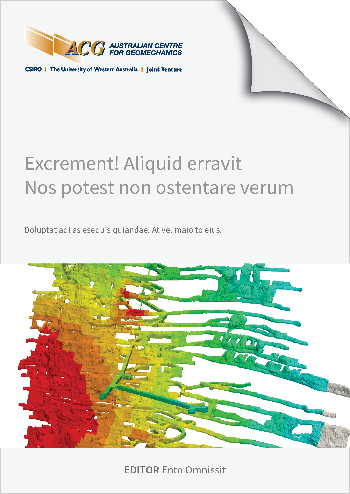Collapse induced business interruption analysis in deep underground mining operations

|
Authors: Torkanfar, N; Narro, A; Best, C; Jarrett, J; Otto, S; Bewick, R. P |
DOI https://doi.org/10.36487/ACG_repo/2435_H-04
Cite As:
Torkanfar, N, Narro, A, Best, C, Jarrett, J, Otto, S & Bewick, R. P 2024, 'Collapse induced business interruption analysis in deep underground mining operations', in Daniel Johansson & Håkan Schunnesson (eds), MassMin 2024: Proceedings of the International Conference & Exhibition on Mass Mining, Luleå University of Technology, Luleå, pp. 1102-1115, https://doi.org/10.36487/ACG_repo/2435_H-04
Abstract:
The depletion of mineral resources has necessitated deeper mining activities, posing increased geotechnical risks with potential financial losses. Despite advancements in risk assessment tools, understanding the financial vulnerabilities associated with geotechnical hazards remains limited in literature and practice. This paper presents a comprehensive framework for forecasting financial losses due to geotechnical hazards, with a specific focus on collapses in underground block cave mines. The framework integrates expert opinions, technical reports, historical data, and simulation techniques to map critical interdependencies, simulate production interruptions, and analyze financial impacts for operating mines. Results from simulations demonstrate a clear correlation between hazard ratings and financial losses, suggesting that proactive risk mitigation strategies can significantly decrease both the frequency and severity of collapses. The study underscores the importance of integrating simulation-based risk assessments into strategic planning and operational decision-making processes in mining companies to enhance resilience, profitability, and promote a culture of safety and risk-awareness.
References:
Baert, K., Francois, K., Meulenaer, B. D. & Devlieghere, F. (2009). Risk assessment: A quantitative approach. In R. Costa & K. Kristbergsson (Eds.), Predictive modeling and risk assessment (Vol. 4, pp. 19–26). .
Brady, T.M., Iannacchione, A.T. & Varley, F. (2008). The Application of major hazard risk assessment (MHRA) to eliminate multiple fatality occurrences in the US minerals industry. Spokane, WA: U.S. Dept. of Health and Human Services, Public Health Service, Centers for Disease Control and Prevention, National Institute for Occupational Safety and Health, Spokane Research Laboratory. [Web.] Retrieved from the Library of Congress, .
Cai, M. (2024). Rockburst risk control and mitigation in deep mining. Deep Resources Engineering, p.100019.
Hormazabal, E., Alvarez, R. & Valderrama, C. (2020). A simplified geotechnical risk-based approach for extraction level pillar design in Block/Panel caving mines. In MassMin 2020: Proceedings of the Eighth International Conference & Exhibition on Mass Mining (pp. 341-356). University of Chile.
Maphalla, R., Mokhoabane, M., Ndou, M. & Shongwe, S. (2022). Quantifying Risk Using Loss Distributions. In Applied Probability Theory-New Perspectives, Recent Advances and Trends. IntechOpen.
Mishra, R. K. & Rinne, M. (2014). Guidelines to design the scope of a geotechnical risk assessment for underground mines. Journal of Mining Science, 50, pp.745-756.
Mishra, R. K., Janiszewski, M., Uotinen, L. K. T., Szydlowska, M., Siren, T. & Rinne, M. (2017). Geotechnical risk management concept for intelligent deep mines. In ISRM EUROCK (pp. ISRM-EUROCK). ISRM.
Robertson, A. & Shaw, S. (2003). Risk management for major geotechnical structures on mines. Vancouver, Canada.
Talu, S., Savage E. & Howe, S. (2016). Geohazmap implementation in block cave mines. MassMin 2016.
Tasse, E., Griffiths, C. & Bewick, R. (2020). Geotechnical hazard maps–A tool for ground support rehabilitation forecasting in active underground mines. In MassMin 2020: Proceedings of the Eighth International Conference & Exhibition on Mass Mining (pp. 1134-1143). University of Chile.
© Copyright 2025, Australian Centre for Geomechanics (ACG), The University of Western Australia. All rights reserved.
View copyright/legal information
Please direct any queries or error reports to repository-acg@uwa.edu.au
View copyright/legal information
Please direct any queries or error reports to repository-acg@uwa.edu.au